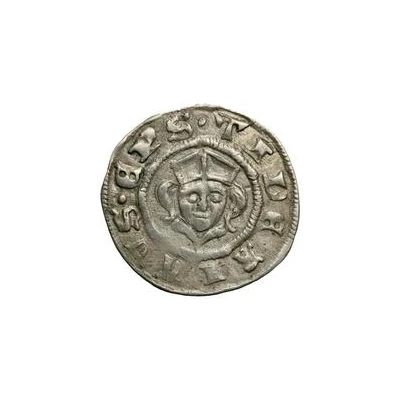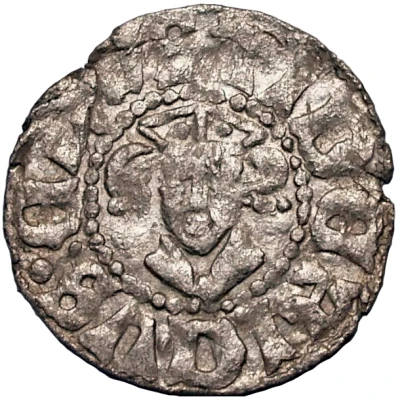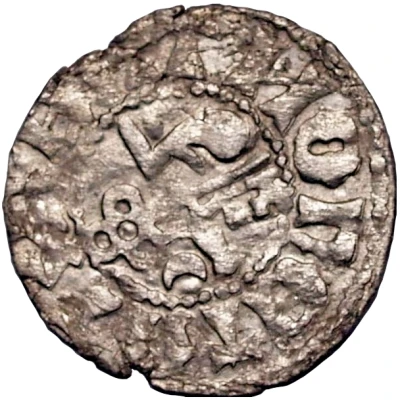


© Antykwariat Numizmatyczny - Michał Niemczyk
1 Artig - Dietrich III Resler Vertical lump; one-ended ND
| Silver | 1.18 g | 18 mm |
| Issuer | Bishopric of Dorpat (Livonian Confederation) |
|---|---|
| Bishop | Dietrich III Resler (1413-1426) Dietrich Gronow (1427-1440) |
| Type | Standard circulation coin |
| Years | 1413-1441 |
| Value | 1 Artig |
| Currency | Artig (1346-1426) |
| Composition | Silver |
| Weight | 1.18 g |
| Diameter | 18 mm |
| Shape | Round (irregular) |
| Technique | Hammered |
| Orientation | Variable alignment ↺ |
| Demonetized | Yes |
| Updated | 2024-10-06 |
| Numista | N#142043 |
|---|---|
| Rarity index | 95% |
Reverse
Crossed sword and key under vertical, one-ended lump, all surrounded by legend.
Script: Latin (uncial)
Lettering: MOnETA · TARBAT ·
Lettering (regular font): MONETA · TARBAT ·
Translation:
Moneta Tharbat
Coin of Dorpat
Edge
Plain
Comment
In 1426, at the end of the Livonian Order's monetary reform, the Artig's name was changed to Schilling. Without there being a date on Dietrich III Resler's coins, they could belong on either side of the monetary reform's date-range.It is currently unknown whether this coin belonged to Dietrich Resler or Dietrich Gronow. Once it is established, this page will be updated.
Some sources list the ruler as being Dietrich III Resler, while other sources list the ruler as being Dietrich IV Resler.
Interesting fact
One interesting fact about this coin is that it was minted during the reign of Dietrich III Resler, who was the Bishop of Dorpat (now known as Tartu) in the Livonian Confederation, a region located in present-day Estonia and Latvia. The coin features a unique design, with a vertical lump on one end and a plain surface on the other, and was made of silver, which was a valuable and durable material at the time. Despite its age, this coin remains a fascinating piece of history and a testament to the craftsmanship and economic systems of the medieval period.



